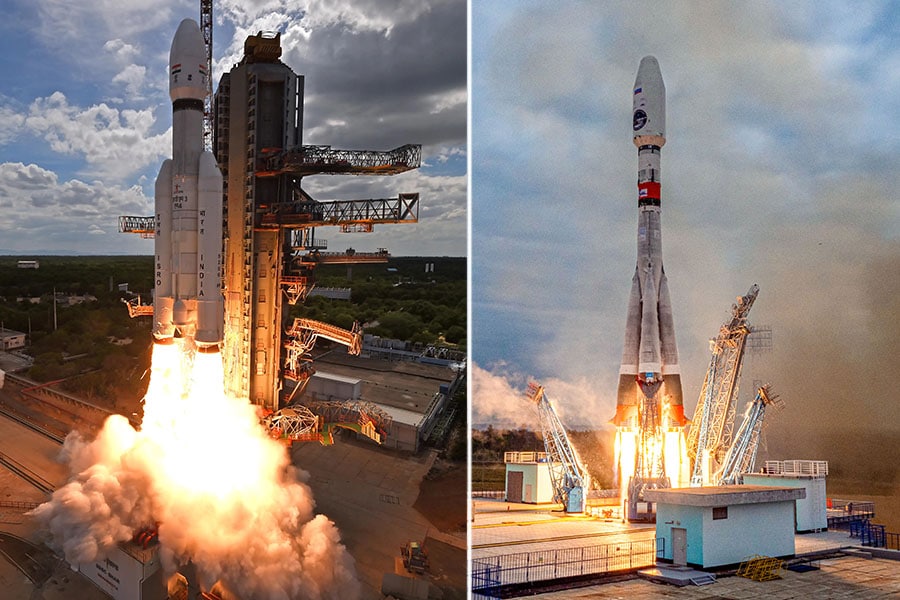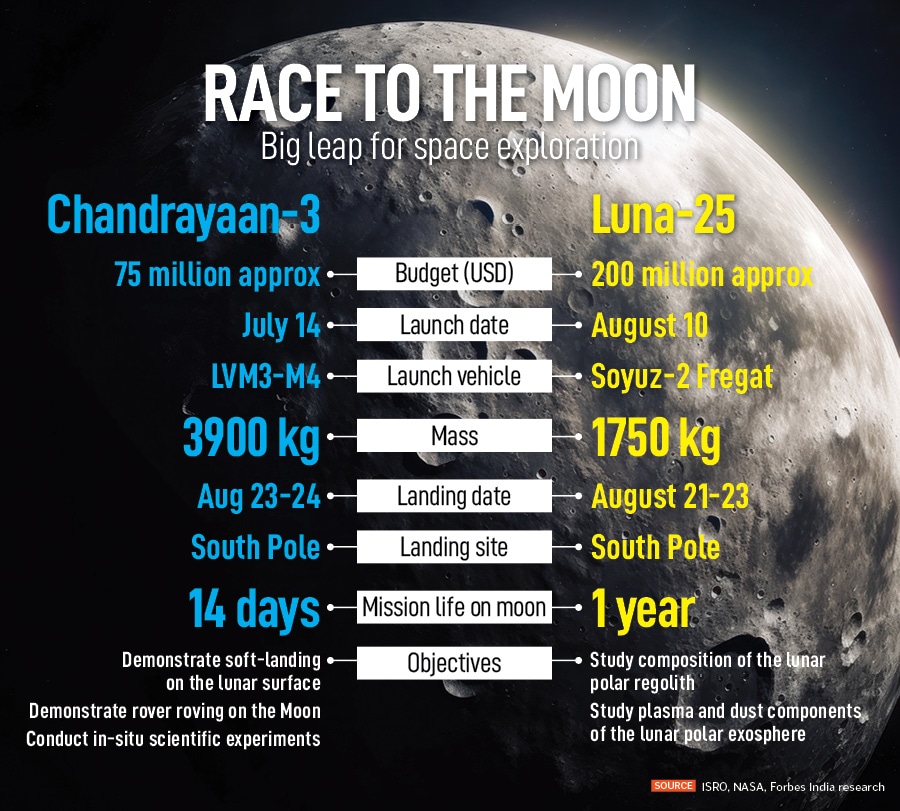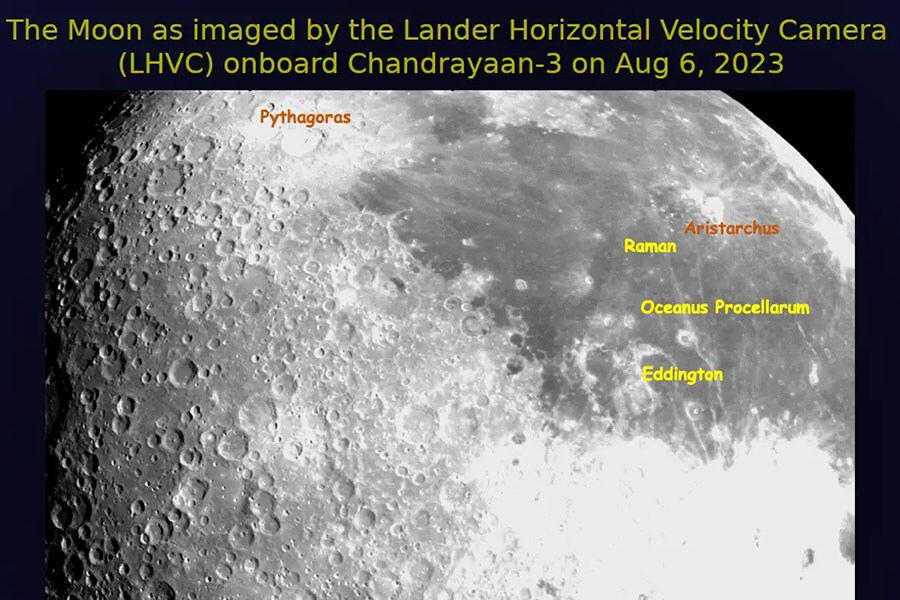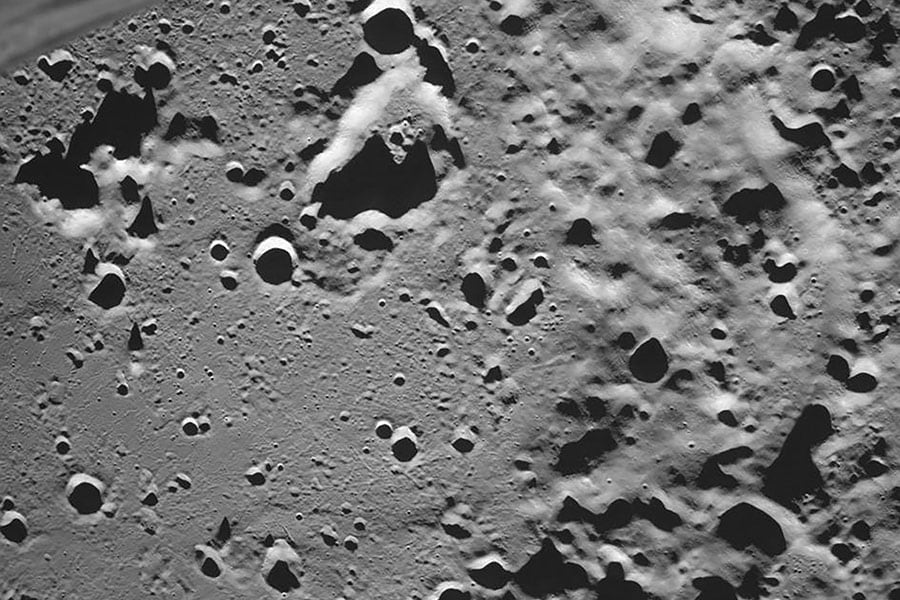
India and Russia's moonshot: It's not a race, it's a leap for space exploration
An exciting week of groundbreaking discoveries lies ahead for space exploration as India's Chandrayaan-3 and Russia's Luna-25 missions prepare to successfully land on the uncharted south pole of the Moon to create history
 Chandrayaan-3 and Luna-25 take-off
Image: Chandrayaan 3: Courtesy ISRO and Luna-25: Handout / Russian Space Agency Roscosmos / AFP
Chandrayaan-3 and Luna-25 take-off
Image: Chandrayaan 3: Courtesy ISRO and Luna-25: Handout / Russian Space Agency Roscosmos / AFP
The third week of August could mark a big leap for space exploration. Two lunar missions, India’s Chandrayaan-3 and Russia’s Luna-25, are in a race to successfully land on the uncharted south polar region of the Moon to become the first ever country to do so. The lunar south pole holds the key to future space missions. Besides, as discovered by Chandrayaan-1, there is a high possibility of potential water resources and an opportunity to understand the unique geology of a possibly mineral-rich terrain.
Russia’s mission to the Moon—after nearly five decades—came as a surprise. The Russian Space Agency’s Luna-25 was launched after a delay of two years on August 10. It is expected to touch down on the lunar south pole, near the Boguslavsky crater, between August 21 and 23. India’s third lunar mission, Chandrayaan-3, was launched nearly a month earlier on July 14 and is scheduled to land on the lunar south pole on August 23 or August 24.
In an interaction with news agency PTI, Chrisphin Karthick, a scientist at Bangalore’s Indian Institute of Astrophysics, rhetorically asked, “Will the race make a difference? In the grand scope of cosmic exploration, the order of arrival may not significantly alter the lunar landscape. Yet, the knowledge gained from each mission will enrich our understanding of the Moon’s past and potential. The value lies in the sum of our combined efforts.”
That is the true human spirit of curiosity and exploration of new frontiers. Other concerns of collision were assuaged by the Russian Space Agency: “Luna-25 and Chandrayaan-3 have been designated different landing sites. The risk of interference or collision is non-existent. Sufficient space exists on the Moon for all activities. Luna-25 will remain stationary and won’t traverse the lunar surface,” Ilya Morozov, spokesperson, Center of Internal and External Communications, State Corporation Roscosmos, reportedly stated.











